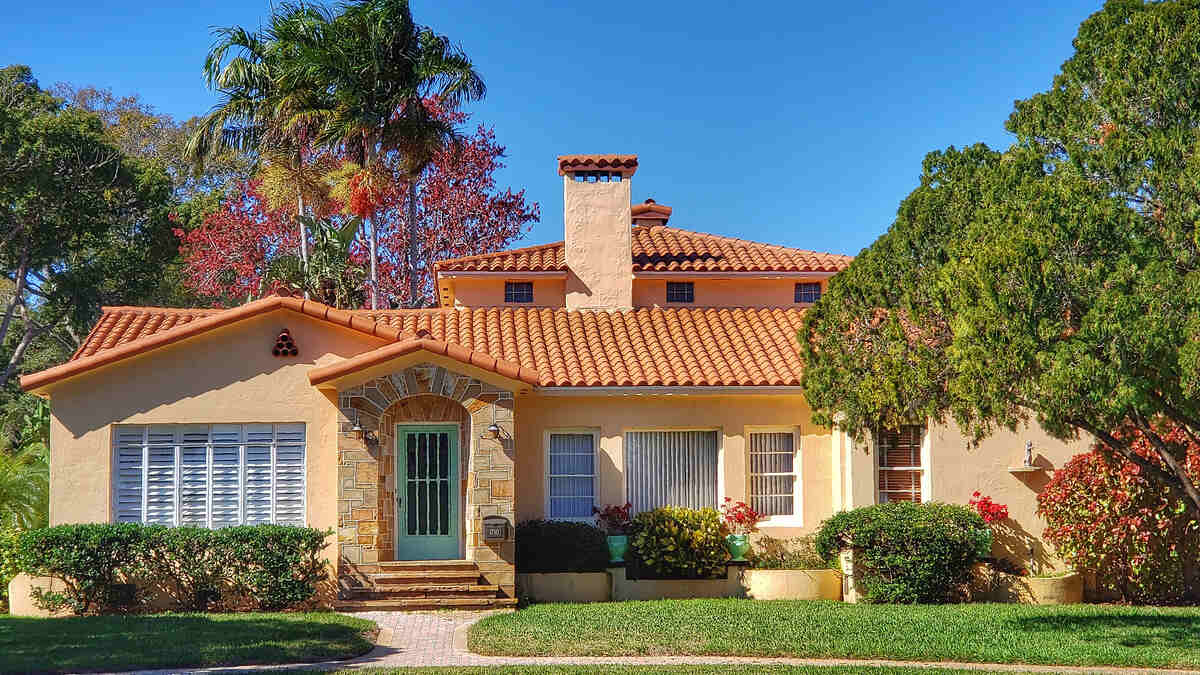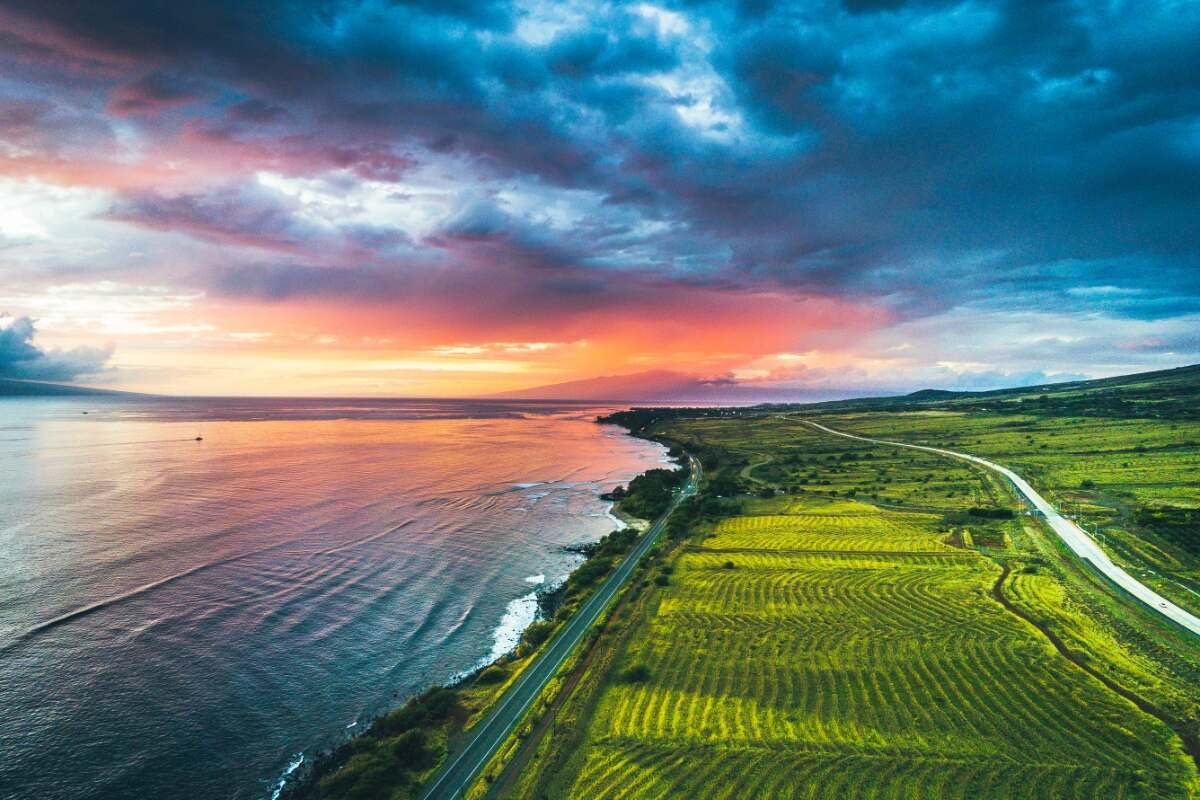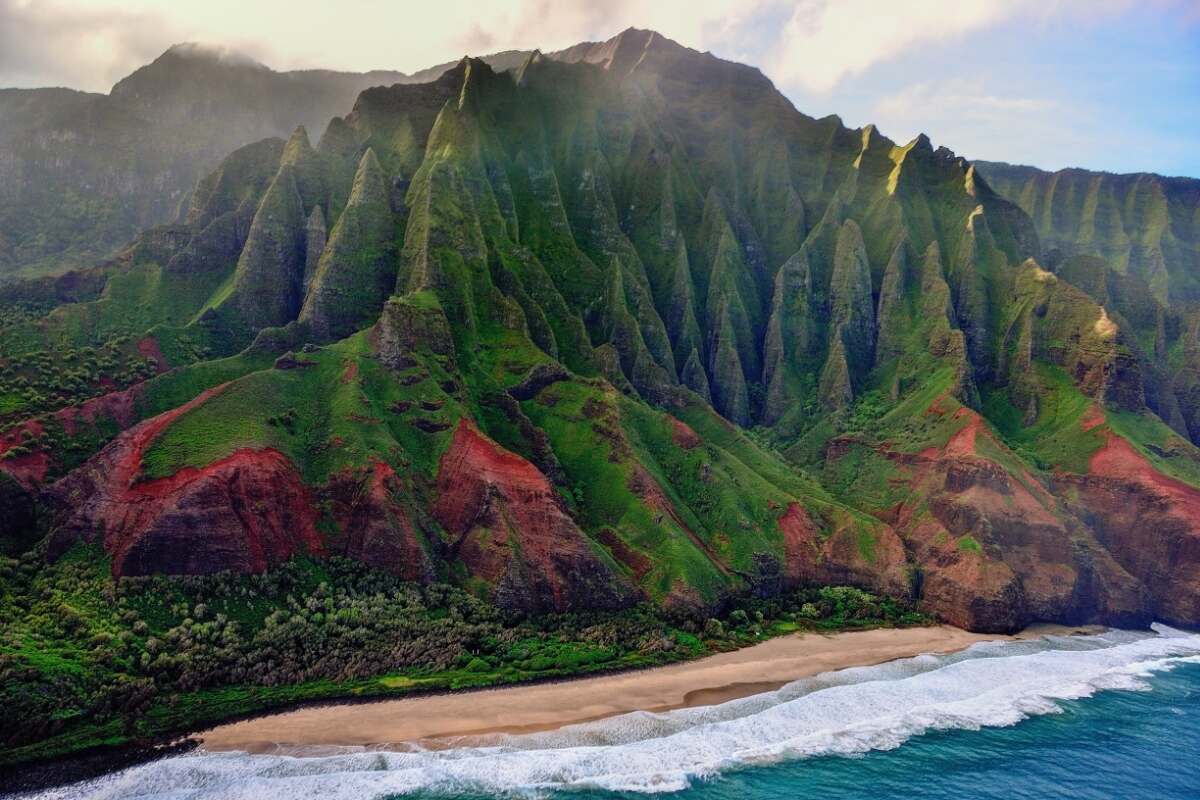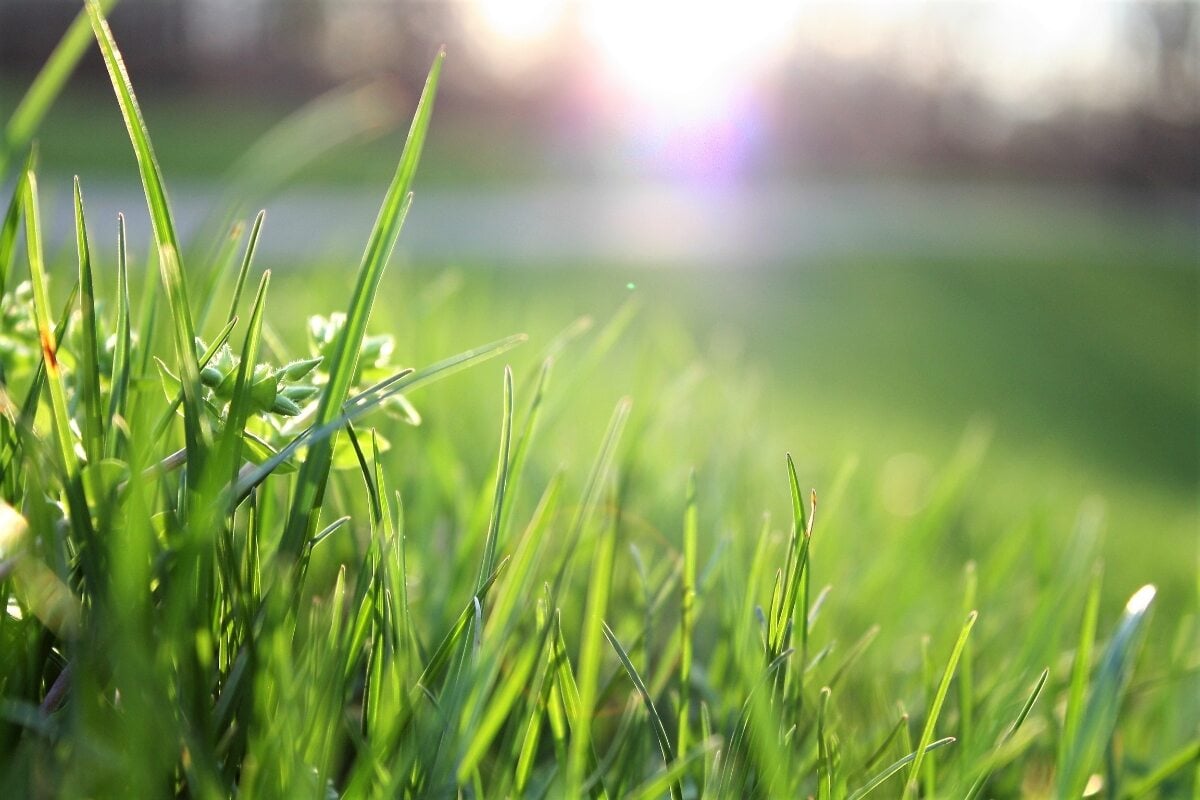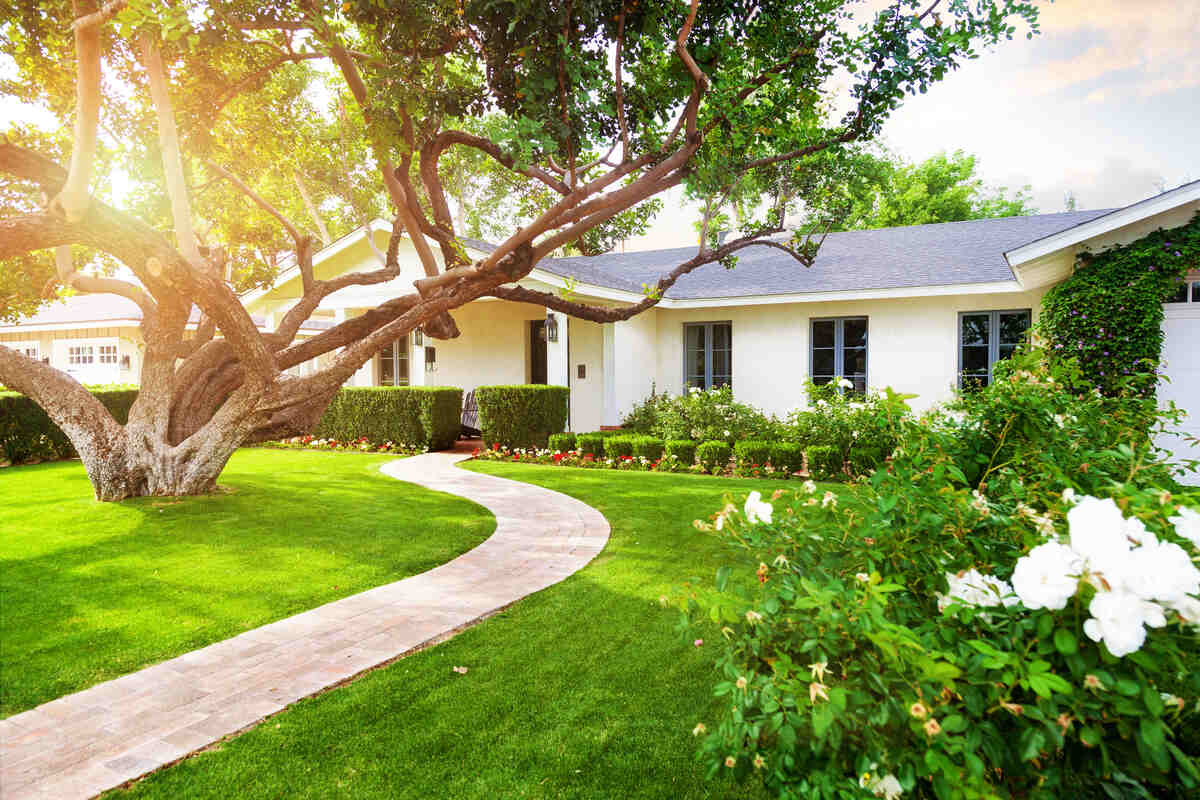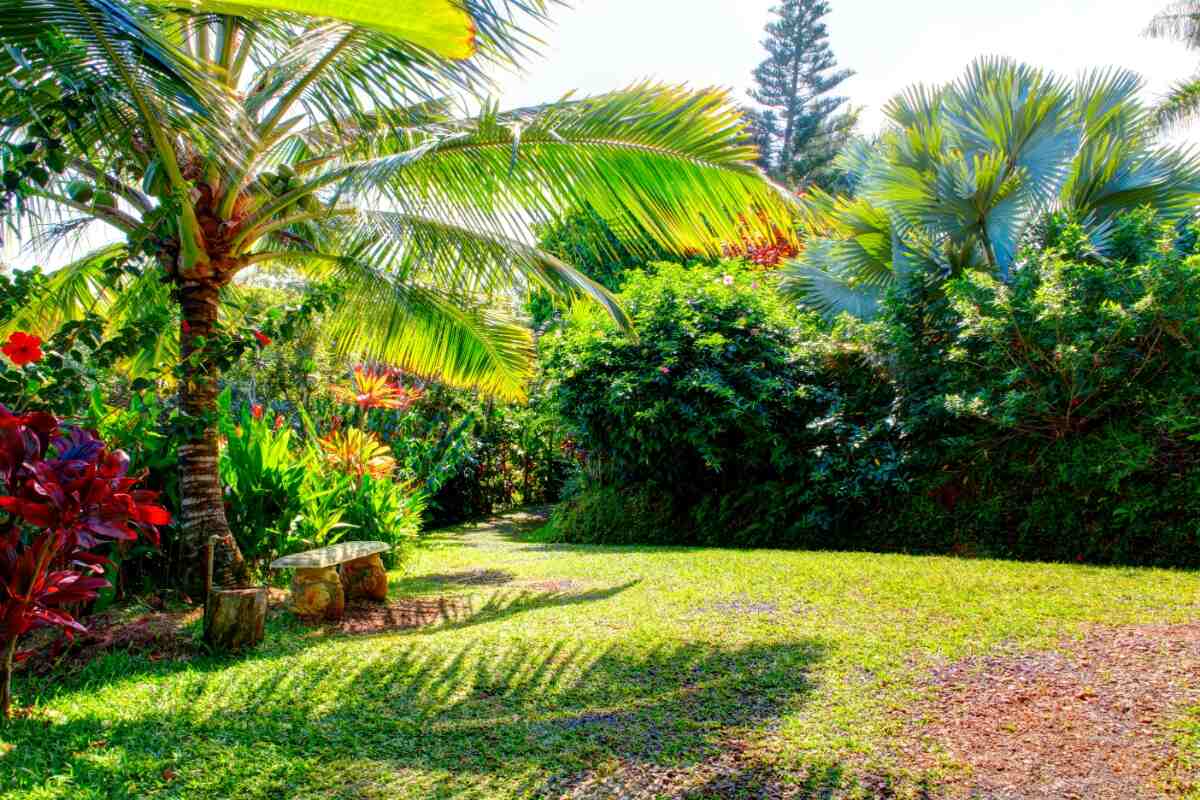
What are the best types of grass for Hawaii’s stunning climate? In the local tropical weather, cool-season grasses only live for 2 to 3 months. Warm-season grasses, green year-round, are the best way to go. Five types, widely appreciated across the southern United States, are battling for the title of the best turfgrass in Hawaii: Bermuda, Zoysia, St. Augustine, centipede, and seashore paspalum.
But which one is the best for you?
Hawaii is a puzzle of soil types and rainfall patterns. It has salt spray, shallow water tables, acidic to alkaline soil, poor to highly fertile terrain, dry coastal areas, and humid mountain slopes – all fitting into one big rainbow-like environment. If you want a healthy, lush lawn, you must first understand your location and what grass fits it best.
Make the first step with this guide.
Read along and discover if Bermudagrass is a good choice, when to go with Zoysia, why seashore paspalum is such an appropriate name, and how centipedegrass might make you a lazy gardener.
- 1. Bermudagrass (Cynodon dactylon) – The Best Grass for Heavy Foot Traffic
- 2. Zoysiagrass (Zoysia spp.) – The Best Grass for Family Lawns
- 3. St. Augustinegrass (Stenotaphrum secundatum) – The Best Grass for Shady Gardens
- 4. Seashore Paspalum (Paspalum vaginatum) – The Best Grass for Coastal Lawns
- 5. Centipedegrass (Eremochloa ophiuroides) – The Best Low-Maintenance Grass
- How to Choose the Best Grass Type for Your Hawaiian Lawn
- FAQ
1. Bermudagrass (Cynodon dactylon) – The Best Grass for Heavy Foot Traffic
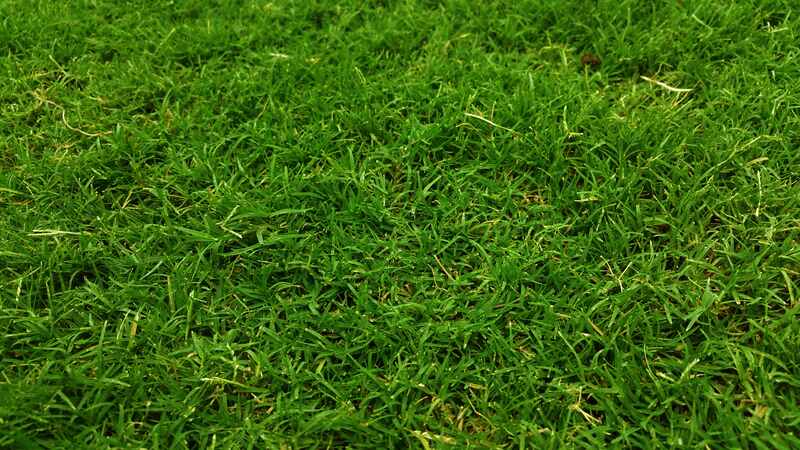
Up north in the continental U.S., sports are played on fescue, ryegrass, or Kentucky bluegrass athletic fields. But in the warmth of tropical Hawaii, Bermudagrass is the main action hero. Growing a dense, lush cover with deep green foliage, Bermuda is the beloved choice for many golf courses like the ones in Kapalua, Wailea, and Mauna Lani.
Its neat and luxurious look also makes it a favorite for home lawns. Bermudagrass spreads fast through stolons, covering any area damaged by overly energetic dogs or family barbeques. It also adapts well to various soil and weather conditions, except one.
Like Superman, Bermudagrass draws strength from the sun and needs full exposure to its light. Planted in the shade, it grows thin and weak, vulnerable to pests and diseases. This trait makes it more popular in sunny cities like Honolulu and less in cloudier ones like Hilo.
- Tip for growing Bermuda: Its beauty comes with high maintenance. Hire a lawn care company to keep a large, demanding Bermudagrass lawn in good shape.
- Established by: Seed (common Bermuda), sod, and sprigs (hybrid Bermuda)
- Shade tolerance: Low. It thrives in full sun.
- Drought tolerance: High
- Foot traffic tolerance: High
- Salt tolerance: Moderate
- Potential for disease: It has good disease resistance, although fungal infections are common. It has low resistance to insects.
- Soil type: Tolerates most soil types but thrives in well-drained soils with a pH of 6 to 6.5.
Maintenance:
- It needs frequent mowing due to the fast growth rate. Set the mower blade between 0.5 and 1.5 inches for hybrid Bermudagrass cultivars. Mow common Bermudagrass down to 1.5 to 2.5 inches.
- Bermuda develops thatch easily.
- It requires regular fertilization. According to the University of Hawaii, mature Bermudagrass needs 9 to 24 lbs of nitrogen, 1 to 4 lbs of phosphorus, and 4 1⁄2 to 12 lbs of potassium per 1,000 sq ft per year.
- Ensure actively growing Bermudagrasses get 1 to 2 inches of water per week.
Grass Seed Options:
– Pennington Bermudagrass Bare Spot (5 lb. bag)
– Pennington Smart Seed Bermudagrass Mix (8.75-lb. bag)
– Scotts Turf Builder Bermudagrass (10-lb. bag)
– Hancock Seed Co. Bermudagrass (50-lb. bag)
2. Zoysiagrass (Zoysia spp.) – The Best Grass for Family Lawns
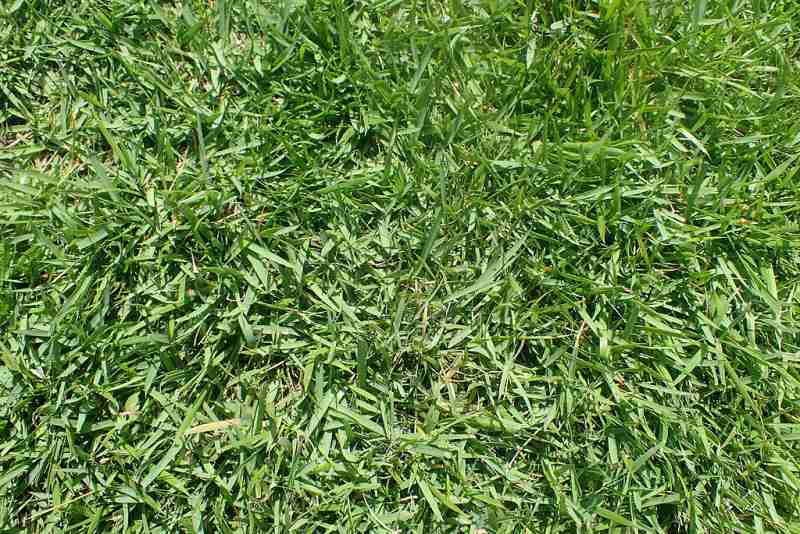
While not resilient enough to withstand the heavy foot traffic of sports fields, Zoysiagrass is a brilliant option for family lawns. It forms a beautiful, thick, dense carpet that can take children running and playing without much damage.
It’s drought-tolerant, withstands some salinity, and does well in moderate shade, thriving in coastal and inland lawns across the Big Island, Oahu, Kauai, Molokai, and Maui. Three types of Zoysiagrass varieties grow in Hawaii:
- Zoysia japonica (Zoysiagrass or Japanese lawngrass) is the most popular, with dark green leaves resembling centipede grass.
- Zoysia matrella (aka Manilagrass) has a soft, fine leaf texture.
- Zoysia tenuifolla (temple-grass, velvetgrass, or Koreangrass) is the most slow-growing variety, usually used as a ground cover under trees, around patios, or between flagstones in walkways.
Zoysia does have a weak point, and that is compacted soil. It requires periodic aeration and dethatching to ensure good drainage, especially with clay soil in your garden.
- Established by: Seed (Zenith and Compadre cultivars of Zoysia japonica), sprigs, sod, plugs (El Toro Zoysia, Mayer, Zeon, and Palisades cultivars). It spreads by stolons and rhizomes after being established.
- Shade tolerance: Moderate
- Drought tolerance: Moderate to High
- Foot traffic tolerance: High, but recovers slowly from damage
- Salt tolerance: High
- Potential for disease: It has good disease tolerance overall.
- Soil type: Zoysia needs well-draining, slightly acidic soil (6.0 to 6.5). Some cultivars are more tolerant of a wide range of soils than others.
Maintenance:
- Low nitrogen fertilization requirements. Plan for 2 to 5 applications per year at a rate of 1 lb of nitrogen (N) per 1,000 sq ft.
- Prone to thatch build-up.
- Set mowing height between 1 and 2 inches. Mowed too tall, it becomes puffy and develops thatch.
- Water only when the lawn shows signs of stress.
Grass Plug and Seed Options:
– Zoysia Plugs (50 Large Grass Plugs)
– Zoysia Plugs (50 Full & Lush Grass Plugs)
– Zoysia Plugs (100 Plugs)
– Zoysia Emerald Grass Seeds (1/8 lb. of seeds)
– Zenith Zenith Grass Seeds (1/8 lb. of seeds)
3. St. Augustinegrass (Stenotaphrum secundatum) – The Best Grass for Shady Gardens
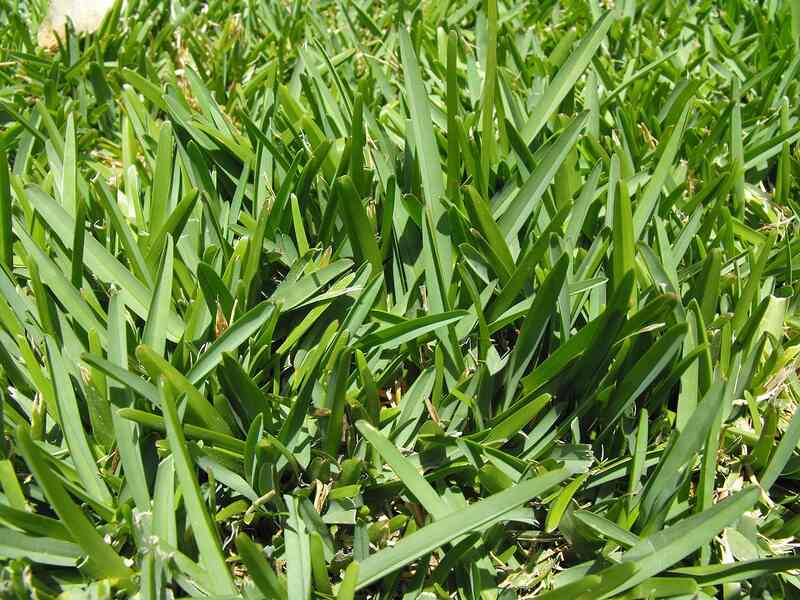
Also known as “buffalograss” in this part of the world, St. Augustinegrass should not be confused with the native North American buffalograss – Buchloe dactyloides. St. Augustine is the perfect choice for low-maintenance, low-traffic lawns in yards shaded by a dense tree canopy.
Maniene-haole or akiaki-haole, as native Hawaiians call it, grows year-round at elevations under 3,000 feet. It creates a dense, dark blue-green turf with coarse foliage. The texture is less pleasant to your feet than Bermuda’s, but its growth habit successfully keeps Hawaii’s most common weeds at bay. With a healthy lawn, you should rarely need to use herbicides.
St. Augustinegrass also has a good track record in tolerating salt spray and the occasional flooding. It can thrive in low-fertility soils up in the mountains and in the lowlands.
- Established by: Stolons, sprigs, and sod. “Floratine” is the most popular cultivar in Hawaii.
- Shade tolerance: Moderate. It is the most shade-tolerant warm-season grass.
- Drought tolerance: Moderate to High
- Foot traffic tolerance: Low
- Salt tolerance: High
- Potential for disease: Moderate to high
— St. Augustine cultivars (except Floratam and Floralawn) are vulnerable to chinch bugs.
— Other pests to keep an eye on are lawn armyworms and webworms.
— As for fungal infections, root rot, brown patch, and grey leaf spot disease are the main ones to watch out for. - Soil type: St. Augustine tolerates many soil types. It thrives in moderately fertile, sandy, sandy-organic, and alkaline soils, moist (not waterlogged) with a pH between 6.0 and 7.5.
Maintenance:
- It needs frequent mowing due to the fast growth rate. Set the mowing height between 3.5 and 4 inches.
- It requires regular fertilization. Apply 1 to 4 pounds of nitrogen per year, depending on the lawn quality you desire and the time you have for maintenance.
- Water as needed.
- It develops thatch easily. Aerate and dethatch at least once a year.
Grass Plug Options:
– Seed Ranch St Augustine Seville Grass Plugs (2 Trays)
– Seed Ranch St Augustine Floratam Grass Plugs (2 Trays)
4. Seashore Paspalum (Paspalum vaginatum) – The Best Grass for Coastal Lawns
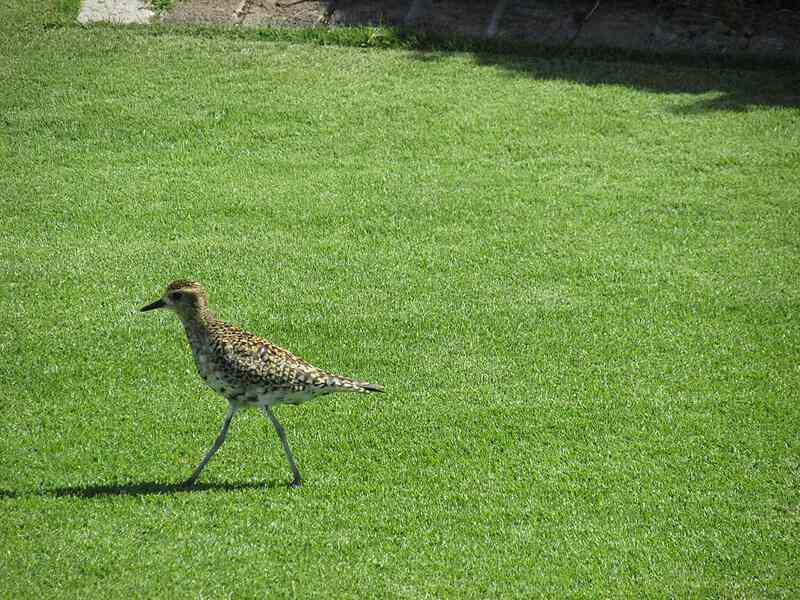
Seashore paspalum is the most resilient to salt spray among Hawaiian turfgrasses. It tolerates high-wave inundation, moist and wet soils with shallow water tables, and thrives in sunny locations. It’s the best choice for homeowners looking for easy-to-grow grass to complement their beachfront houses in places like Lankai, Waimea, or Kahala.
With beautiful blue-green to dark-green soft leaves, seashore paspalum is a feisty grass, resistant to most pests and grass diseases. It grows such a dense cover that weeds don’t stand a chance. On the other hand, it doesn’t like to be walked on much, so treat it like an ornamental and plant it in areas with less foot traffic.
- Established by: Sprigs, stolons, plugs, or sod
- Shade Tolerance: Low to Moderate
- Drought Tolerance: Moderate. Less drought tolerant than Bermudagrass and Zoysiagrass but more than St. Augustinegrass and centipedegrass.
- Foot Traffic Tolerance: Moderate
- Salt tolerance: High
- Potential for Disease: Moderate. Common diseases include brown patch and dollar spot.
- Soil Type: Tolerates various soil conditions, including wet, saline soil, with a wide pH range (3.6 to 10.2).
Maintenance:
- Moderate fertilizer. The University of Hawaii recommends applying 1⁄2 lb of N per 1,000 sq ft monthly.
- It needs mowing once a week or more often. Set the mower blades between 1 and 2 inches high.
- Irrigate established seashore paspalum to a soil depth of 4 – 6 inches at each watering.
- It becomes a heavy thatch maker if overfertilized.
Grass Seed and Sod Options:
– Seed Ranch SeaShore Paspalum Coated Grass Seed – 1 lb.
– Seed World SeaShore Paspalum Grass Seeds (various amounts)
– Other places to purchase seashore paspalum sod
5. Centipedegrass (Eremochloa ophiuroides) – The Best Low-Maintenance Grass
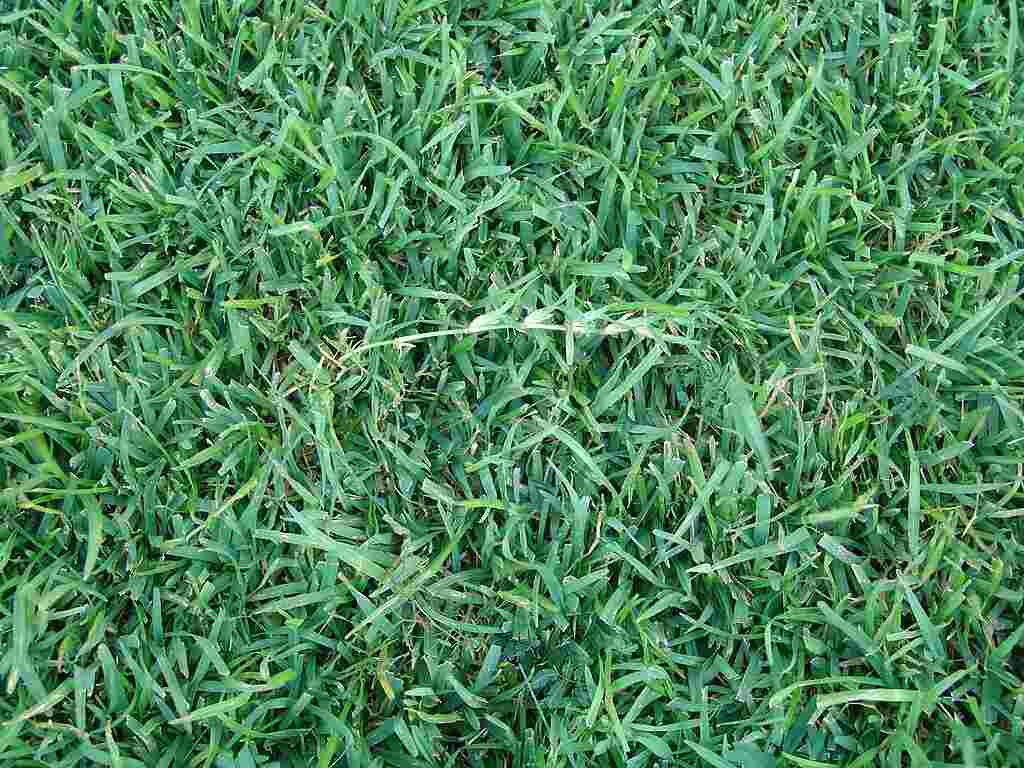
Sometimes called the “lazy man’s grass,” centipedegrass thrives with minimal care in the right soil and environment. It’s particularly adapted to thrive in sandy to moderately heavy, well-drained, moist, poor soils.
Centipedegrass spreads its leafy stolons into a dense, thick, lime-green mat that needs less mowing than Bermuda or St. Augustine. On the other hand, it’s less drought-tolerant than other grasses. It thrives in areas with over 40 inches of rain per year, like Kilauea, Kaneohe, Waimea, and Hilo. A reliable sprinkler system is needed to supplement rainfall in drier spots like Honolulu, Lihue, and Waikiki.
- Established by: Sprigs, plugs, sod, and seed
- Shade tolerance: Moderate
- Drought tolerance: Low to moderate because of its shallow root system
- Foot traffic tolerance: Low
- Salt tolerance: Low. Avoid planting it on beachfront lawns.
- Potential for disease:
— Good resistance to diseases and insects if well maintained.
— Watch for chinch bugs, dollar spot, and brown patch disease. - Soil type: It grows well in acidic (pH of 5 to 6), infertile soil with at least moderately good drainage (very dense, clay soils produce poor results).
Maintenance:
- Because of its slow vertical growth, it requires less frequent mowing. Set the mowing height between 1.5 and 2 inches. If planted in the shade, increase height to 2.5 inches.
- It has low fertilizer needs. Apply 1 pound of slow-release nitrogen per 1,000 sq. ft. per year from March to May.
- Water as needed. Do not use brackish or “gray” water. Centipede is sensitive to salt.
Grass Seed Options:
– Gulf Kist Coated Centipedegrass Seeds (1 lb.)
– Scotts EZ Seed Patch and Repair Centipedegrass (3.75 lbs.)
– TifBlair Centipedegrass (5-lb. bag)
– Pennington Centipedegrass and Mulch (5-lb. bag)
How to Choose the Best Grass Type for Your Hawaiian Lawn
Now you know how Bermuda, Zoysia, centipede, St. Augustine, and seashore paspalum fit the Hawaii climate and soil characteristics. To make the choice easier, consider these five basic criteria.
Rainfall, Water Requirements, and Drought Resilience
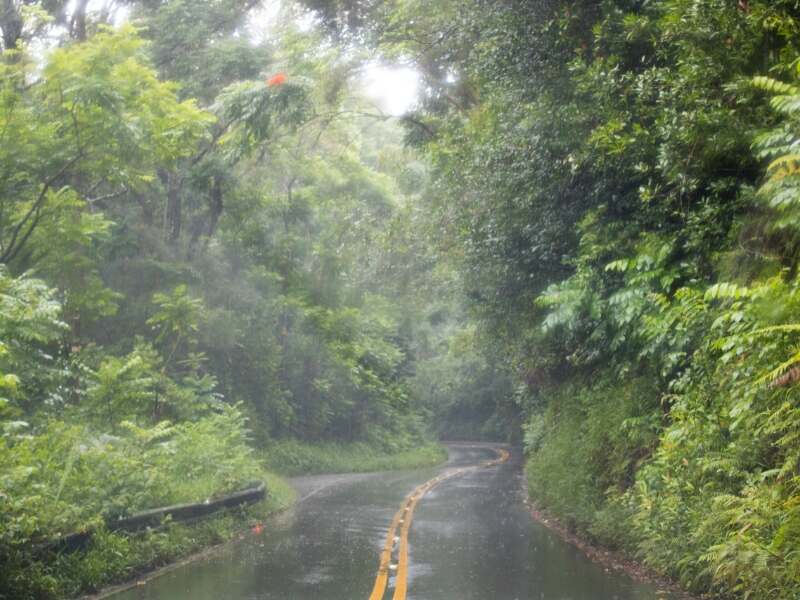
Hawaii has varied rainfall patterns depending on where you live. On the leeward side of the islands, summers are dry, and winters are wet due to seasonal storms.
It’s a good place to plant Bermuda and St. Augustine. Their high drought tolerance makes the lawn more resilient during dry spells.
The windward side is wet and humid across the year due to rainfall brought by trade winds. Suitable turfgrasses are those that need more water and can tolerate moist soil. Bermuda and seashore paspalum are the two top choices.
Soil Condition
The best grass seed for your garden depends on the soil texture, drainage, and fertility. Bermuda and St. Augustine need fertile soil and often require adding compost and fertilizers. Centipede thrives in poor soils.
Seashore paspalum can tolerate wet soils and even grow along the margins of ponds, while Zoysia needs well-drained soil and does better during drought than overwatered.
Salinity
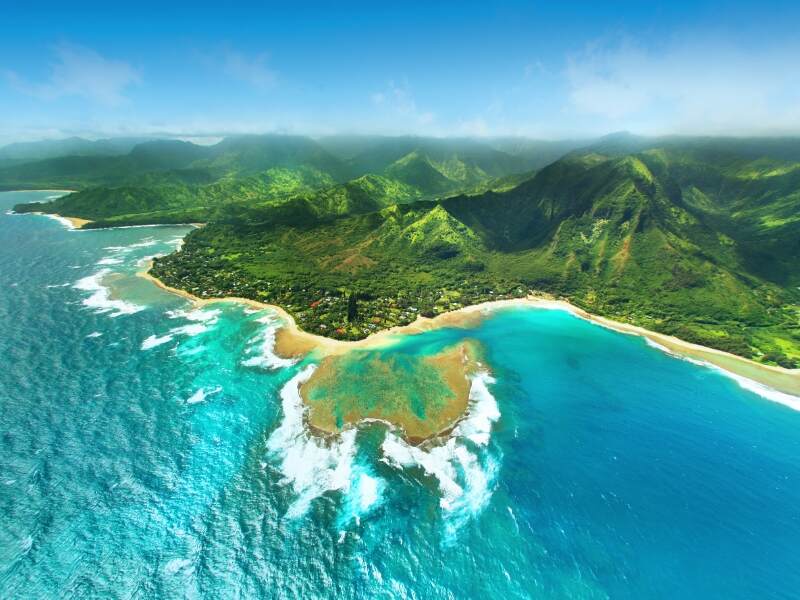
Hawaiian lawn owners deal with salinity in more than one way. On coastal properties, trade winds spray saltwater across the shore. Inland, it’s in shallow water tables. If this is your case, plant salt-tolerant grasses like seashore paspalum and Zoysia. Avoid Bermuda and centipede.
Shade Tolerance
Some grasses do well in light shade, under shrubs, or the tree canopy. Zoysia and St. Augustine are two good examples. But Bermuda, centipede, and seashore paspalum need at least 6-8 hours of direct sunlight every day. They are harder to maintain in the shade and more exposed to pests and diseases.
Maintenance Level
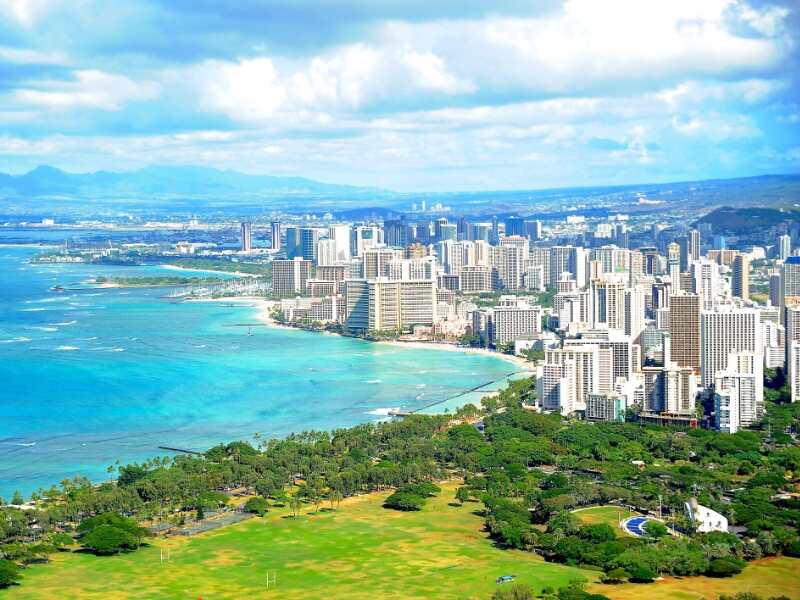
This factor is about you and your lifestyle. If caring for your lawn is a passion, and you intend to invest time and energy in a lush, green, manicured lawn, go for Bermudagrass. It’s high maintenance, but it’s worth it.
If your dream lawn is a turfgrass you install, water occasionally, and forget about the rest of the time, centipedegrass is your best option.
With moderate maintenance needs and good-looking turf, St. Augustine, Zoysia, and seashore paspalum are somewhere in between.
Learn about all the work that goes into proper lawn maintenance in our article on how to grow grass in Hawaii.
FAQ About Types of Grass in Hawaii
Bermudagrass is the best option to grow in Hawaii lawns. It adapts well to various soils and weather conditions across the islands.
At lower altitudes, temperatures don’t go below 55 – 60°F. Warm-season grasses can grow year-round even though, during winter, growth slows down.
Instead of turfgrass, you can plant native, low-maintenance groundcovers. Some of the most common on the Hawaiian islands are ilima papa, akia, hinahina, and kupukupu.
Pili grass is sometimes considered Hawaii’s native lawn. It grows in dense bunches of bluish-green color, up to three feet tall. Pili grass thrives in full sun, with excellent heat tolerance and little maintenance.
Seashore paspalum and Zoysia are the best choices for lawns near the ocean. They have good tolerance to salt sprays and moist soils.
The archipelago of Hawaii includes USDA hardiness zones 9a to 13a. The coastal plains are in zones 12a to 13a. As you go inland and higher in elevation, hardiness zones decrease (meaning the temperatures get colder).
Enjoy the Best Turfgrass in Hawaii
There is a way to enjoy an amazing, healthy, lush lawn year-round in Hawaii, and it starts with choosing the right type of grass. Don’t worry if you can’t decide. Whether in Honolulu, Hilo, or Kailua, LawnStarter has local professionals to guide you toward the best decision and take care of your lawn once it’s planted. Contact a local lawn care company and install the best turfgrass in Hawaii today!
LawnStarter participates in the Amazon Services LLC Associates Program, an affiliate advertising program. LawnStarter earns revenue from products promoted in this article.
Main Photo Credit: irina88w / Canva Pro / License
